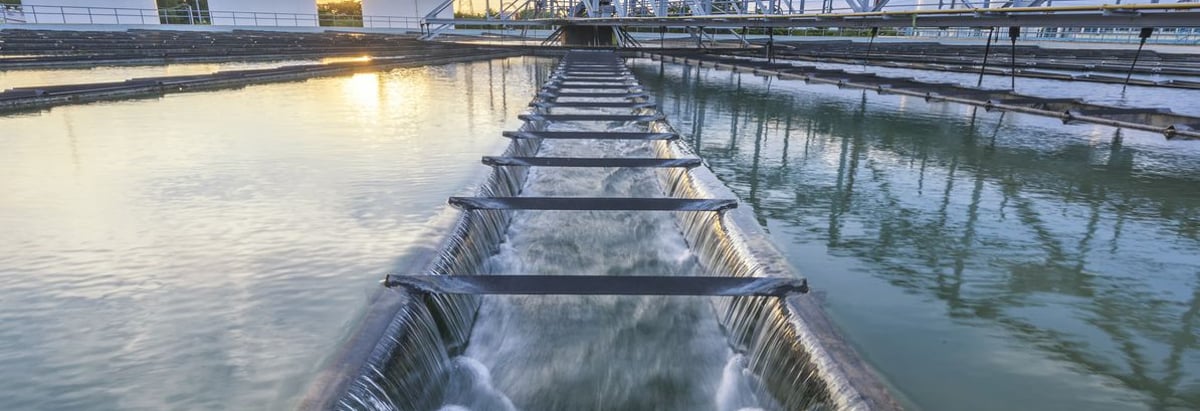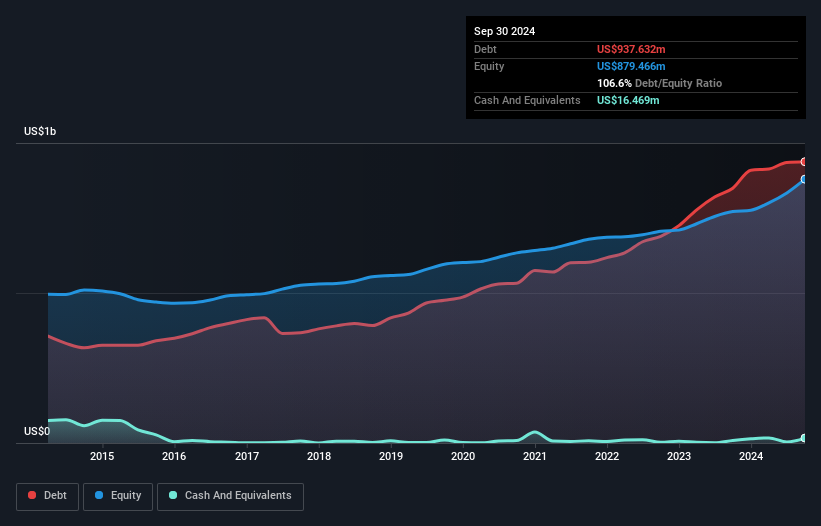- United States
- /
- Water Utilities
- /
- NYSE:AWR
We Think American States Water (NYSE:AWR) Is Taking Some Risk With Its Debt

David Iben put it well when he said, 'Volatility is not a risk we care about. What we care about is avoiding the permanent loss of capital.' So it might be obvious that you need to consider debt, when you think about how risky any given stock is, because too much debt can sink a company. We can see that American States Water Company (NYSE:AWR) does use debt in its business. But the real question is whether this debt is making the company risky.
When Is Debt Dangerous?
Debt assists a business until the business has trouble paying it off, either with new capital or with free cash flow. In the worst case scenario, a company can go bankrupt if it cannot pay its creditors. However, a more common (but still painful) scenario is that it has to raise new equity capital at a low price, thus permanently diluting shareholders. By replacing dilution, though, debt can be an extremely good tool for businesses that need capital to invest in growth at high rates of return. When we examine debt levels, we first consider both cash and debt levels, together.
See our latest analysis for American States Water
How Much Debt Does American States Water Carry?
As you can see below, at the end of September 2024, American States Water had US$937.6m of debt, up from US$849.3m a year ago. Click the image for more detail. And it doesn't have much cash, so its net debt is about the same.

How Healthy Is American States Water's Balance Sheet?
We can see from the most recent balance sheet that American States Water had liabilities of US$321.4m falling due within a year, and liabilities of US$1.22b due beyond that. Offsetting this, it had US$16.5m in cash and US$140.5m in receivables that were due within 12 months. So its liabilities outweigh the sum of its cash and (near-term) receivables by US$1.38b.
While this might seem like a lot, it is not so bad since American States Water has a market capitalization of US$2.89b, and so it could probably strengthen its balance sheet by raising capital if it needed to. However, it is still worthwhile taking a close look at its ability to pay off debt.
In order to size up a company's debt relative to its earnings, we calculate its net debt divided by its earnings before interest, tax, depreciation, and amortization (EBITDA) and its earnings before interest and tax (EBIT) divided by its interest expense (its interest cover). The advantage of this approach is that we take into account both the absolute quantum of debt (with net debt to EBITDA) and the actual interest expenses associated with that debt (with its interest cover ratio).
American States Water has a debt to EBITDA ratio of 4.1 and its EBIT covered its interest expense 4.3 times. This suggests that while the debt levels are significant, we'd stop short of calling them problematic. Even more troubling is the fact that American States Water actually let its EBIT decrease by 4.6% over the last year. If that earnings trend continues the company will face an uphill battle to pay off its debt. The balance sheet is clearly the area to focus on when you are analysing debt. But ultimately the future profitability of the business will decide if American States Water can strengthen its balance sheet over time. So if you want to see what the professionals think, you might find this free report on analyst profit forecasts to be interesting.
But our final consideration is also important, because a company cannot pay debt with paper profits; it needs cold hard cash. So we always check how much of that EBIT is translated into free cash flow. Over the last three years, American States Water saw substantial negative free cash flow, in total. While investors are no doubt expecting a reversal of that situation in due course, it clearly does mean its use of debt is more risky.
Our View
Mulling over American States Water's attempt at converting EBIT to free cash flow, we're certainly not enthusiastic. Having said that, its ability to handle its total liabilities isn't such a worry. We should also note that Water Utilities industry companies like American States Water commonly do use debt without problems. Looking at the bigger picture, it seems clear to us that American States Water's use of debt is creating risks for the company. If everything goes well that may pay off but the downside of this debt is a greater risk of permanent losses. When analysing debt levels, the balance sheet is the obvious place to start. However, not all investment risk resides within the balance sheet - far from it. These risks can be hard to spot. Every company has them, and we've spotted 3 warning signs for American States Water (of which 1 is concerning!) you should know about.
If you're interested in investing in businesses that can grow profits without the burden of debt, then check out this free list of growing businesses that have net cash on the balance sheet.
New: Manage All Your Stock Portfolios in One Place
We've created the ultimate portfolio companion for stock investors, and it's free.
• Connect an unlimited number of Portfolios and see your total in one currency
• Be alerted to new Warning Signs or Risks via email or mobile
• Track the Fair Value of your stocks
Have feedback on this article? Concerned about the content? Get in touch with us directly. Alternatively, email editorial-team (at) simplywallst.com.
This article by Simply Wall St is general in nature. We provide commentary based on historical data and analyst forecasts only using an unbiased methodology and our articles are not intended to be financial advice. It does not constitute a recommendation to buy or sell any stock, and does not take account of your objectives, or your financial situation. We aim to bring you long-term focused analysis driven by fundamental data. Note that our analysis may not factor in the latest price-sensitive company announcements or qualitative material. Simply Wall St has no position in any stocks mentioned.
About NYSE:AWR
American States Water
Through its subsidiaries, provides water and electric services to residential, commercial, industrial, and other customers in the United States.
Average dividend payer with questionable track record.
Similar Companies
Market Insights
Community Narratives




